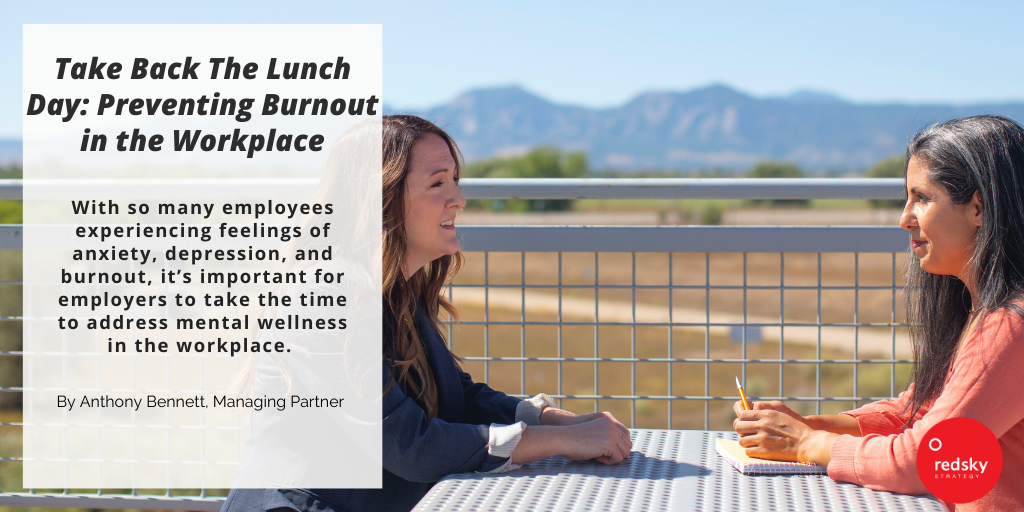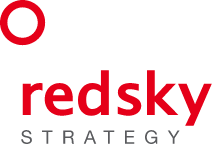News
Take Back The Lunch Day: Preventing Burnout in the Workplace

Image Credit: https://unsplash.com/photos/_4qmlxHbX6I
Mental wellness and burnout at work have been a corporate concern for years. However, assessing it, managing and, perhaps most importantly, preventing it is difficult. This is especially true when during and post-pandemic workplaces moved remote or hybrid.
The Burden of Burnout
While the term “burnout” was first coined in the 1970s, it’s only recently that we’ve started to better understand and recognize the signs of work-related burnout. In fact, a study published in 2018 found that nearly one in five American workers is at risk of burnout.
The pandemic didn’t do anything to help slow these rates. A McKinsey study found that one of every three employees says their return to the workplace has negatively impacted their mental health, and that they’re experiencing emotions of feeling anxious and depressed. Nearly 60% of Americans have felt isolated since the beginning of the pandemic.
So, what exactly is work burnout? Put simply, it’s a state of physical, mental, and emotional exhaustion that’s caused by prolonged or unmanaged stress. When someone experiences work burnout, they may feel like they’re constantly running on empty, struggling to keep up with the demands of their job. This can lead to a range of negative consequences, including decreased productivity, higher absenteeism rates, and an increased risk of accidents.
During lockdowns, many people lost access to how they normally rest and recharge from their work. Working from home often leads to longer hours, with the average work day increasing from nine to 12 hours.
Leveraging Lunch Breaks for Healthier Workplaces
It’s important for businesses to think about the opportunities and methods for keeping their team members healthy and engaged. There are many ways to go about this. But a simple strategy could be as straightforward as encouraging employees to take a lunch break. This could go a long way in helping reduce burnout and set teams up for a more productive afternoon.
Studies have shown that eating lunch in the middle of the day raises your blood sugar level, providing the energy needed for the remainder of the day. It can also help boost focus and concentration.
According to a study commissioned by Tork, employees who take lunch breaks are more likely to be efficient at work and satisfied with their jobs. Nearly 90% of employees consider having the ability to take a lunch break crucial when accepting a job.
There are a number of ways to prevent and manage work burnout. These include developing healthy coping mechanisms, communicating openly with teams about workloads, and scheduling regular breaks – including lunch.
As many businesses return to normal, it’s easier to encourage traditional lunch breaks. However, with so many going fully online or hybrid, there are some unique obstacles to navigate.
In some cases, it may require employers to redefine lunch. For instance, instead of getting together for three-martini lunches, a suitable substitute could be encouraging employees to take a short break and a walk or participate in non-work-related activities.
Additional tips employers can use to help prevent burnout with their employees include:
- Starting wellness programs: Giving team members access to wellness resources and tools can help alleviate stress and establish a sense of camaraderie among colleagues. This could include online courses, meditation and yoga classes, etc.
- Creating four-day workweeks: Shorter work weeks can give employees more time and space to focus on themselves and recharge. Alternatively, businesses could also allow a hybrid working environment and flex schedule where at least one day a week employees have the option of working from home. Some of the most well-known companies that done this include Kickstarter, Buffer, and Toshiba.
- Leading by example: If employers want to encourage their employees to take necessary breaks and prioritize mental health it’s important that they do the same, and as transparently as possible.
- Exercising open communication: It’s important that team members feel that can speak openly and comfortably about mental health and their workloads so that necessary adjustments can be made when and where possible,
Burnout can have a major impact on both individual workers and organizations as a whole. When employees are struggling with burnout, they’re more likely to make mistakes, call in sick, or quit altogether. This can lead to decreased productivity, lower morale, and higher turnover rates.
Recognizing the signs of burnout and taking steps to prevent it is essential for any organization that wants to create a healthy and sustainable workplace. By investing in employee wellbeing, employers can help to reduce the risk of burnout and create a more positive work environment for everyone.
Interested in working with RedSky Strategy? We can help you leverage HumanSight to gain intuitive insights and perspectives that help move you forward.
